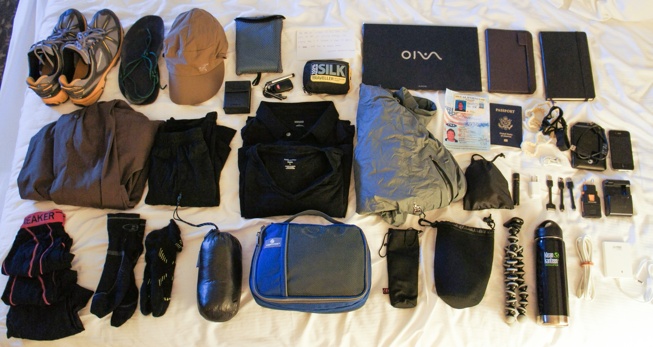How To Travel Around the World
I hung up the phone with the travel agent. I had just finished booking 45,000 miles worth of flights around the world. The trip would last a year and take me to 23 different countries.
Over a year of planning and saving had culminated with a phone call and everything was booked successfully.
The trip took me to snowy, northern Norway past the Arctic Circle, the rainy and humid islands of Indonesia, and the sunny and sandy beaches of Australia. I hiked, swam, slept outside, ate in decent restaurants, and went out to clubs.
Basically, I experienced a huge range of temperatures, cultures, climates, terrain, and activities, and I did it all out of a backpack you’d take with you to school (my pack was 26 liters and weighed 20 pounds).
Initially, after hanging up the phone with the travel agent, I was elated.
However, the reality of what I had just signed myself up for slowly started to sink in and I realized I still had a lot of work to do.
Mainly, what was I going to take with me?
In this article I’m going to discuss how I did it and what worked for me — this isn’t the solution, merely a solution.
It was a solution I put a lot of thought, effort, and research into, but ultimately, the gear I took was centered around mobility, efficiency, and inconspicuousness, and I’ll get into each of these aspects in detail throughout the article.
Overall, the decision to travel so light turned out to be one of the best decisions I made, and the number one piece of advice I give anyone getting ready to travel is to pack less.
But why, and more importantly, how?
Mobility

Mobility is the bread and butter of traveling minimally because there’s a certain freedom in knowing everything you need is with you and accessible.
People I met along the way couldn’t believe how small my backpack was when I told them I was traveling for a year. I had everything I needed, just not very much of it.
As the architectural saying goes, “Anyone can design a bridge that stands. It takes an engineer to design a bridge that barely stands.”
I wanted to pack my backpack around the idea this quote represents — finding the essential amount of gear needed to make sure I was comfortable for any environment I might encounter, while also maximizing my mobility.
Therefore, I focused on finding high quality, versatile, and compact gear.
Clothing
There are two options when it comes to being minimal with your everyday clothing:
- Buy cheaper clothes you can discard and replace when they get worn out/dirty/smelly.
- Buy high quality clothing requiring more upkeep (washing and mending) but that will last much longer.
I chose option #2.
My socks, shirts, and undies were all made from Merino wool and I tried to pick dark colors to conceal the inevitable dirt and grime build-up.
Merino wool is an amazing material. It has great flow and insulation properties (it will keep you warm when it’s cold outside and cool when it’s hot outside), it dries quickly, it has high odor resistance (you can go longer before washing), it’s not bulky or itchy, and unlike cotton it will still keep you warm if it gets wet.
Often times I’d jump into the shower wearing my shirt and undies, give them a good wash, wring them out in the sink, roll them up in my towel like a burrito, and step on it (to get more water out). Then I’d put the damp clothing back on and within minutes of walking around they would be dry and clean.
It’s the perfect material for the minimal traveler.
The everyday clothing I packed included:
- 2 t-shirts (Icebreaker)
- 2 pairs of socks (one by SmartWool, one by Icebreaker)
- 3 underwear (2 by Icebreaker, one by Exofficio)
- 1 pair of pants (Prana)
- running shorts (Prana)
- cap (Arc’teryx Spiro)
- shoes
- sandals (Invisible Shoes)
The cold weather gear I took included:
- long-sleeve Merino wool shirt (Icebreaker)
- down jacket (Montbell EX Light)
- rain jacket (Patagonia Super Cell)
- mittens
- long underwear bottoms
- beanie
- scarf/face-mask
Cold weather gear was compact and meant to be worn in layers.
For example, if it was freezing outside I could wear a t-shirt, my long sleeve shirt, my down jacket, and my outer shell rain coat.
This set up kept me warm in the coldest of weather, could be mixed up to be suitable for different climates and was much more compact/versatile than a large overcoat.
Leave a Reply